A.T. Tvardovsky "Vasily Terkin": description, characters, analysis of the poem
The poem "Vasily Terkin" is dated 1941-1945 - the difficult, terrible and heroic years of the struggle of the Soviet people against the Nazi invaders. In this work, Alexander Tvardovsky created an immortal image of a simple, Soviet fighter, defender of the Fatherland, who became a kind of personification of deep patriotism and love for his Motherland.
History of creation
The poem began to be written in 1941. Separate excerpts were printed in a newspaper version in the period from 1942 to 1945. In the same 1942, a still unfinished work was published separately.
Oddly enough, but work on the poem was started by Tvardovsky back in 1939. It was then that he already worked as a war correspondent and covered the course of the Finnish military campaign in the newspaper On Guard for the Motherland. The name was coined in collaboration with members of the editorial board of the newspaper. In 1940, a small brochure "Vasya Terkin at the front" was published, which was considered a great award among the fighters.
The image of the Red Army soldier was liked by the readers of the newspaper from the very beginning. Realizing this, Tvardovsky decided that this topic was promising and began to develop it.
From the very beginning of the Great Patriotic War, being at the front as a war correspondent, he finds himself in the hottest battles. He gets surrounded with the soldiers, leaves it, retreats and goes on the attack, experiencing from his own experience everything that he would like to write about.
In the spring of 1942, Tvardovsky arrives in Moscow, where he writes the first chapters "From the Author" and "On a Halt", and they are immediately published in the newspaper Krasnoarmeyskaya Pravda.
Such an explosion of popularity Tvardovsky could not imagine even in his wildest dreams. The central publications Pravda, Izvestia, Znamya reprint excerpts from the poem. Orlov and Levitan read the texts on the radio. Artist Orest Vereisky creates illustrations that finally formed the image of a fighter. Tvardovsky holds creative evenings in hospitals, and also meets with labor collectives in the rear, raising morale.
As always, what the common people liked did not receive the support of the party. Tvardovsky was criticized for pessimism, for the lack of mention that the party leads all the accomplishments and achievements. In this regard, the author wanted to finish the poem in 1943, but grateful readers did not allow him to do this. Tvardovsky had to agree to censorship edits, in return he was awarded the Stalin Prize for his immortal work. The poem was completed in March 1945 - it was then that the author wrote the chapter "In the Bath".
Description of the work
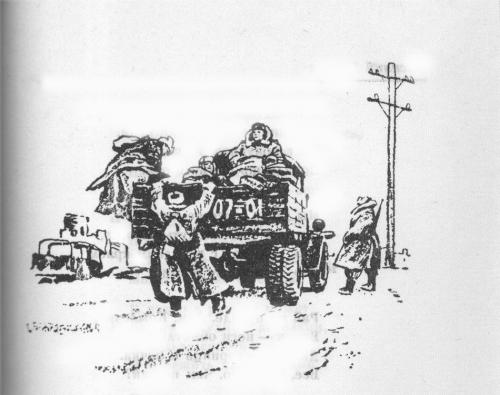
The poem has 30 chapters, which can be conditionally divided into 3 parts. In four chapters, Tvardovsky does not talk about the hero, but simply talks about the war, about how much ordinary Soviet peasants had to endure, who defended their homeland, and hints at the progress of work on the book. The role of these digressions cannot be underestimated - this is a dialogue between the author and readers, which he conducts directly, even bypassing his hero.
There is no clear chronological sequence in the course of the story. Moreover, the author does not name specific battles and battles, however, individual battles and operations highlighted in the history of the Great Patriotic War are guessed in the poem: the retreat of the Soviet troops, which were so common in 1941 and 1942, the battle near the Volga, and, of course, the capture Berlin.
There is no strict plot in the poem - and the author did not have the task of conveying the course of the war. The central chapter is "Crossing". The main idea of the work is clearly traced there - a military road. It is on it that Terkin and his comrades are striding towards the achievement of the goal - complete victory over the Nazi invaders, which means to a new, better and free life.
The hero of the work
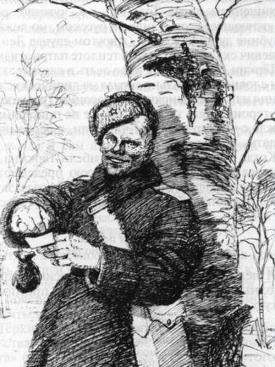
The main character is Vasily Terkin. A fictional character, cheerful, cheerful, straightforward, despite the difficult circumstances in which he lives during the war.
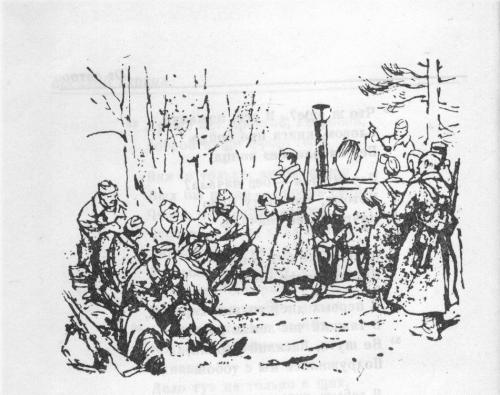
We observe Vasily in different situations - and everywhere we can note his positive qualities. Among brothers-in-arms, he is the soul of the company, a joker who always finds an opportunity to joke and make others laugh. When he goes on the attack, he is an example for other fighters, he shows such qualities as resourcefulness, courage, endurance. When he rests after a fight, he can sing, he plays the accordion, but at the same time he can answer quite harshly and with humor. When soldiers meet with civilians, Vasily is charm and modesty itself.
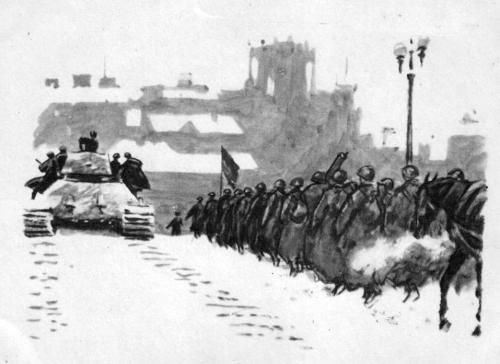
Courage and dignity, shown in all, even the most desperate situations, are the main features that distinguish the protagonist of the work and form his image.
All other heroes of the poem are abstract - they don't even have names. Brothers in arms, a general, an old man and an old woman - they all just play along, helping to reveal the image of the main character - Vasily Terkin.
Analysis of the work
Since Vasily Terkin does not have a real prototype, we can safely say that this is a kind of collective image that was created by the author, based on his real observations of the soldiers.
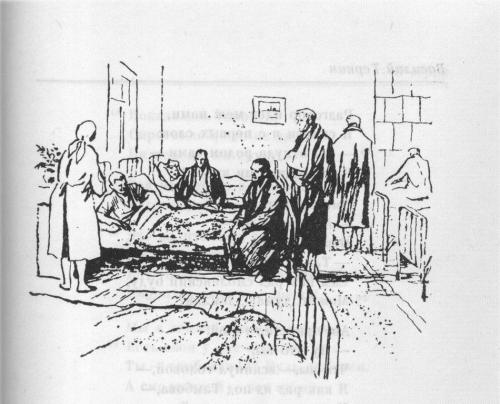
The work has one distinctive feature that distinguishes it from similar works of that time - this is the absence of an ideological beginning. In the poem there is no praise of the party and personally Comrade Stalin. This, according to the author, "would destroy the idea and figurative structure of the poem."
The work uses two poetic meters: four-foot and three-foot trochee. The first size is found much more often, the second - only in separate chapters. The language of the poem has become a kind of Tvardovsky's card. Some moments that look like sayings and lines from funny songs, as they say, “gone to the people” and began to be used in everyday speech. For example, the phrase “No, guys, I’m not proud, I agree to a medal” or “Soldiers surrender cities, generals take them out” are still used by many today.
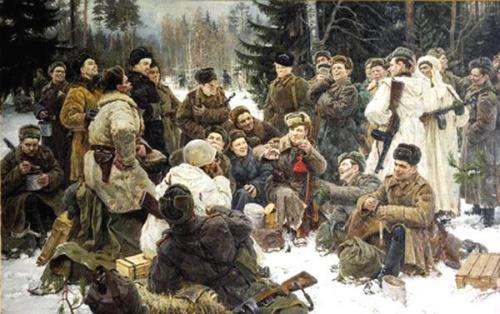
It was on such as the protagonist of this poem in verse that all the hardships of the war fell. And only their human qualities - fortitude, optimism, humor, the ability to laugh at others and at themselves, in time to defuse the tense situation to the limit - helped them not only win, but also survive in this terrible and merciless war.
The poem is still alive and loved by the people. In 2015, the Russian Reporter magazine conducted sociological research on hundreds of the most popular poems in Russia. Lines from "Vasily Terkin" took 28th place, which indicates that the memory of the events of 70 years ago and the feat of those heroes is still alive in our memory.
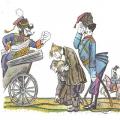 “Lefty” - a summary of the work N
“Lefty” - a summary of the work N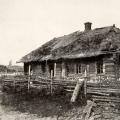 Turgenev, "Biryuk": a summary
Turgenev, "Biryuk": a summary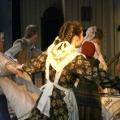 Comedy A.N. Ostrovsky "Poverty is not a vice": a summary of the work
Comedy A.N. Ostrovsky "Poverty is not a vice": a summary of the work